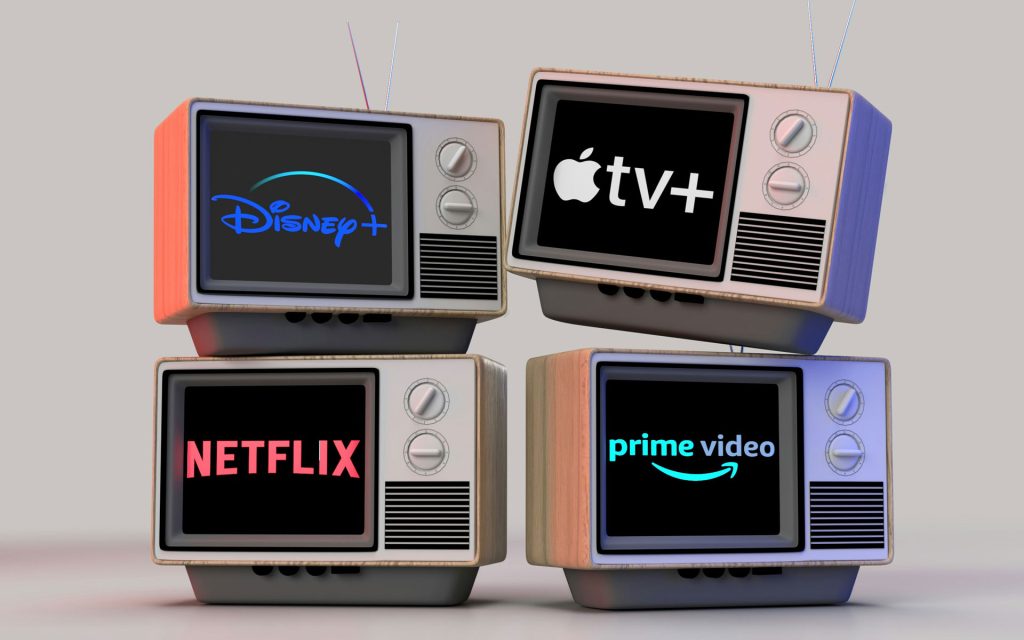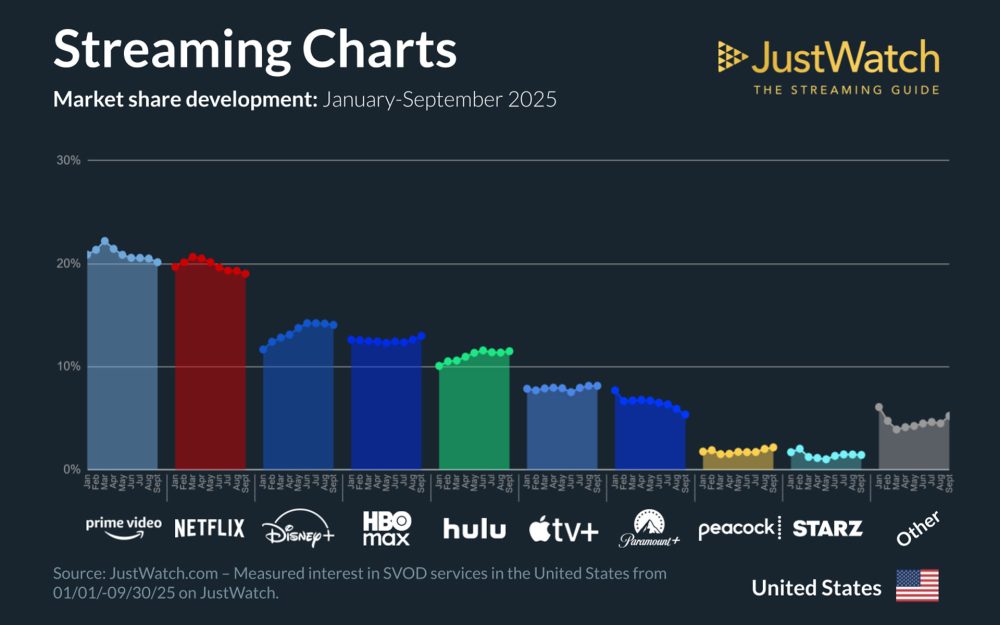US streaming wars heating up, Netflix and Prime Video challenged
Gradual changes to consumer tastes lead to a more competitive market – but which services will make the most of that?
KOSTAS FARKONAS
PublishED: November 11, 2025

The US streaming market, the most mature of its kind around the world, seems to be going through some changes lately – this time, though, it’s the market leaders that are feeling the pressure. According to new data from JustWatch – the online service tracking the viewing behavior of more than 20 million American users each month – Amazon Prime Video and Netflix are both showing signs of strain as challengers like Disney Plus, HBO Max and Apple TV steadily close what once was an almost insurmountable gap.
The third-quarter 2025 report from the global streaming guide paints a clear picture: the dominance for the top two platforms is gradually giving way to a somewhat balanced – definitely more competitive, always good for consumers – ecosystem. See, in the course of more than a decade Netflix and Amazon Prime Video have not only created but basically shaped the subscription-based, modern video-on-demand market into what it is today – but what these latest figures suggest, is that their reign may be coming to a close.
Prime Video now holds a 20% market share (down one percentage point from the previous quarter and two points year over year) while Netflix trails just behind with 19% (also shedding one point this quarter and two across the year). Both services seem to have peaked in early 2025 – at 22% and 21% respectively – but have seen steady declines ever since. Meanwhile, Disney Plus now commands a 14% market share of the US market: that’s an increase of two percentage points compared to last year and a sign of its potential as a true challenger to Netflix and Prime Video.

It’s worth noting that Hulu, which is also part of Disney’s streaming portfolio, now holds 11% of the US streaming services (stable from last quarter and up one point year over year). Its consistent performance in the mid-tier space complements Disney Plus’s upward trajectory, granting the parent company a combined 25% share – well above that of either Prime Video or Netflix.
Smaller players seem to be doing better too, though. HBO Max – now stabilized after a period of uncertainty during the Warner Bros. Discovery restructuring – is showing signs of renewed strength: the platform reclaimed lost ground in Q3 2025, its market share rising by one percentage point to reach 13% of the US market. That recovery follows a brief dip earlier in the year, yes, but its year-over-year numbers remain flat, suggesting that HBO Max has achieved a sustainable position in the mid-tier.
Apple TV is also gradually becoming a notable player in 2025: while it holds 8% of the US market – a modest number compared to that of other contenders – this service’s consistency stands out, both quarter over quarter and year over year (even as rivals like Paramount Plus falter). Apple’s quality-over-quantity strategy is starting to show long-term dividends and it may only take a few more critically acclaimed, award-winning movies or shows before it gets the attention of mainstream consumers (taking it to maybe 10% over the next 18-24 months).

What’s also interesting to see is that, while the spotlight often falls on the industry’s biggest players, smaller streaming services are quietly expanding their footprints. According to JustWatch, “Other” platforms collectively gained 1 percentage point this quarter and 2 points year over year, led by BritBox (which recorded an astonishing 126% year-over-year growth). Peacock Premium also edged upward by one point year over year (now at 2%), while Starz held steady at 1%. These small gains seem to reflect the demand for curated, genre-specific or regional content offerings that can flourish along the mainstream, already successful ones.
The most important takeaway from this JustWatch Q3 2025 report, though, is clear: the US streaming market seems to have entered a new phase. With penetration rates already really high, subscription fatigue setting in and a challenging economic climate overall, for every player in this market, big and small, it will be less about acquiring new users and more about keeping them engaged (and paying).
Netflix and Prime Video remain formidable, obviously, but their declines after so many years of dominance may be marking a true turning point for this market. Disney Plus emerged as the clear leader among challengers, HBO Max is proving resilient and Apple TV is consolidating its position as a premium service. As the streaming wars evolve into a fight for engagement and loyalty – rather than sheer subscriber volume – this industry’s next winners will probably be those who deliver not just content, but consistent quality. Interesting times ahead, no?





















